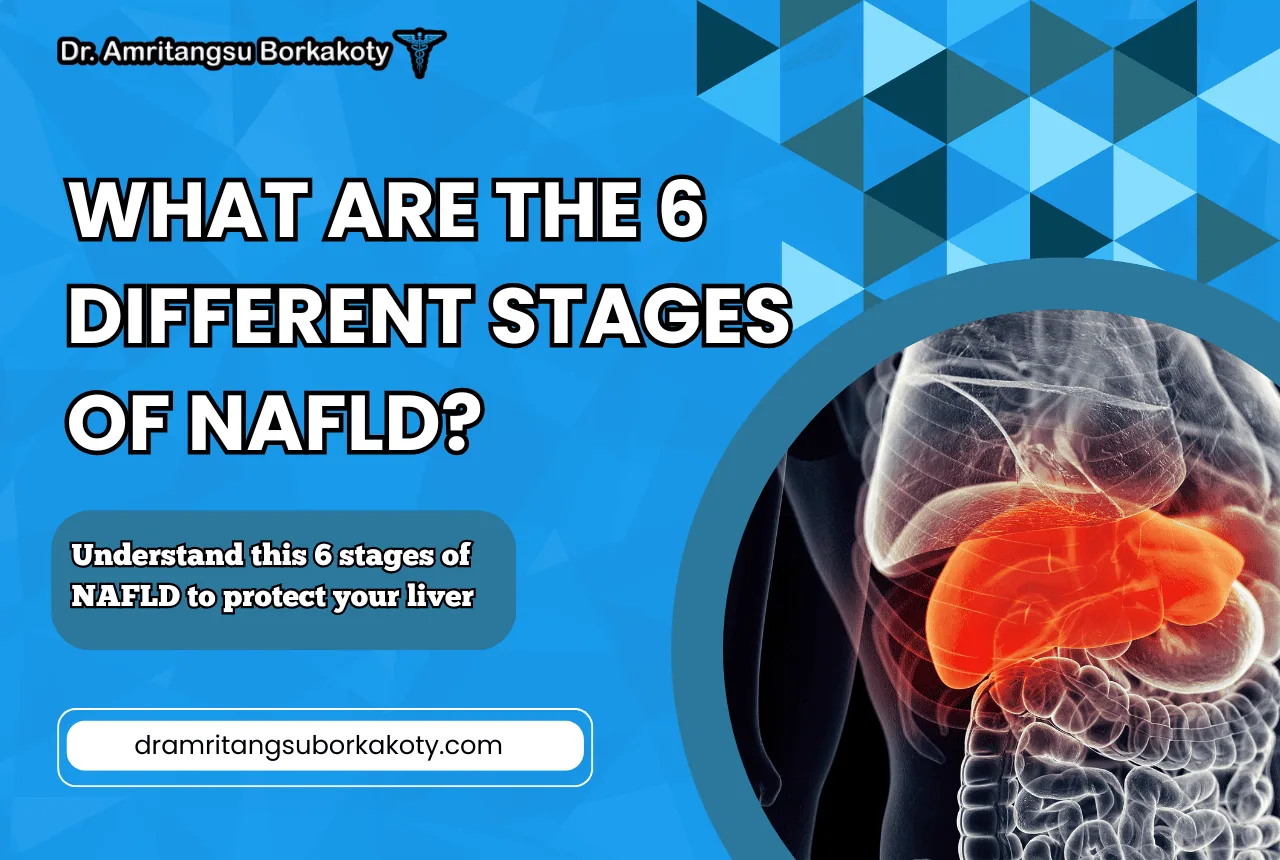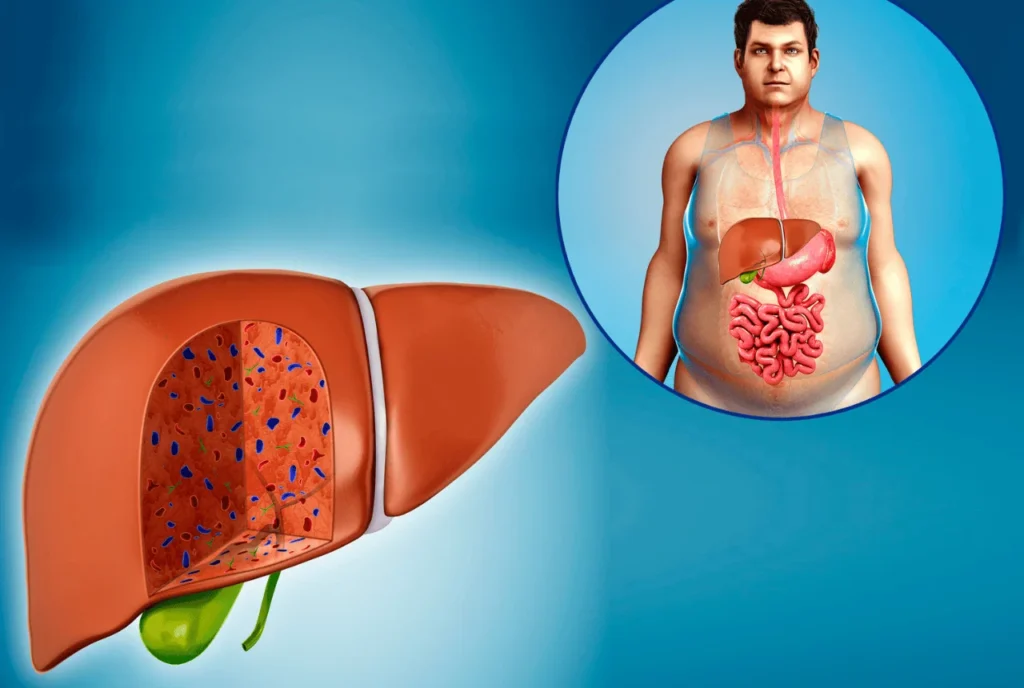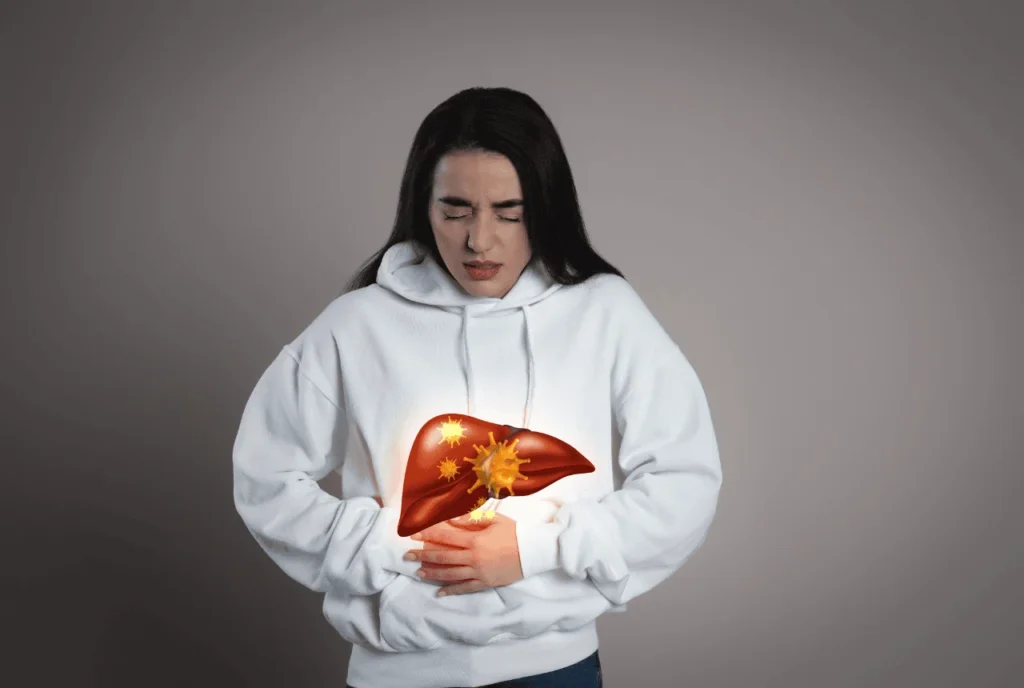
-
 Posted By Dr. Amritangsu Borkakoty
Posted By Dr. Amritangsu Borkakoty -
-
Comments 0
Introduction
Non-Alcoholic Fatty Liver Disease (NAFLD) has become a growing health concern worldwide, affecting millions of individuals due to rising obesity and metabolic disorders. NAFLD is characterized by the accumulation of fat in the liver of individuals who consume little to no alcohol. It is a progressive condition that may range from simple fat accumulation to severe liver damage.
Understanding the different stages of NAFLD is crucial because early detection and proper management can prevent the disease from advancing to life-threatening conditions. Many individuals with early-stage NAFLD do not exhibit symptoms, making it a silent yet potentially dangerous disease.
This blog will provide a detailed explanation of the six different stages of NAFLD, their progression, symptoms, and possible reversal methods.
Understanding the Different Stages of NAFLD
NAFLD is not a single disease but a spectrum of liver conditions that evolve over time if left unchecked. The disease progresses through different stages, starting with simple fat accumulation and possibly leading to serious liver damage, including cirrhosis and liver failure.
- Some individuals may only experience the early stage (steatosis) and never progress beyond it.
- Others may develop Non-Alcoholic Steatohepatitis (NASH), which includes liver inflammation and scarring.
- Severe cases may lead to fibrosis, cirrhosis, and eventually liver failure or cancer.
- The challenge is that early stages of NAFLD are often asymptomatic, which makes awareness and routine medical check-ups essential.
Now, let’s explore the six stages of NAFLD progression in detail.
The 6 Stages of NAFLD Explained in Detail
1. Simple Fatty Liver (Steatosis)

Definition: The first and least harmful stage of NAFLD is called steatosis, where excess fat accumulates in the liver cells. At this stage, the liver is not yet inflamed or damaged.
Key Characteristics:
- No inflammation or scarring
- Often asymptomatic
- Usually detected through routine ultrasounds or blood tests
Causes and Risk Factors:
- Unhealthy diet rich in saturated fats and sugars
- Obesity and sedentary lifestyle
- Diabetes and insulin resistance
- High cholesterol and triglycerides
Management and Reversal:
- Adopting a healthy diet (low in processed foods and high in fiber)
- Increasing physical activity (at least 30 minutes of exercise daily)
- Weight loss to reduce liver fat content
2. Non-Alcoholic Steatohepatitis (NASH)

Definition: NASH is a more aggressive form of NAFLD that includes inflammation of the liver along with fat accumulation. Unlike simple steatosis, NASH can cause serious damage over time.
Key Characteristics:
- Liver inflammation and hepatocellular injury
- Potential for fibrosis development
- May cause mild to moderate symptoms in some cases
Possible Symptoms:
- Fatigue and weakness
- Mild pain in the upper right abdomen
- Slight liver enlargement (detectable through imaging tests)
Risk of Progression:
- 10-30% of NAFLD patients develop NASH
- Persistent inflammation can lead to fibrosis and cirrhosis
Management and Reversal:
- Strict diet control (reduce sugar, processed carbs, and trans fats)
- Regular physical activity to improve insulin sensitivity
- Monitoring liver enzymes through blood tests
- Medications under medical supervision (Vitamin E, Pioglitazone, etc.)
3. Fibrosis

Definition: Fibrosis occurs when persistent liver inflammation leads to scar tissue formation, reducing the liver’s efficiency but still allowing it to function.
Key Characteristics:
- Scar tissue forms around liver blood vessels
- Liver function remains largely intact
- Symptoms may still be mild or absent
Possible Symptoms:
- Mild discomfort in the liver region
- Increased fatigue
- Digestive issues in some cases
Risk of Progression:
- 25-40% of NASH patients develop progressive fibrosis
- If untreated, fibrosis may evolve into cirrhosis
Management and Reversal:
- Weight management and lifestyle modifications
- Medications targeting inflammation
- Monitoring for liver disease progression
- Avoiding alcohol and hepatotoxic medications
4. Cirrhosis

Definition: Cirrhosis is the most advanced stage of liver scarring, where extensive fibrosis has hardened the liver and severely impaired its function.
Key Characteristics:
- Liver loses its ability to regenerate
- Irreversible damage occurs
- Higher risk of liver failure and cancer
Symptoms:
- Jaundice (yellowing of the skin and eyes)
- Abdominal swelling due to fluid retention
- Mental confusion (hepatic encephalopathy)
- Increased susceptibility to infections
Management and Treatment:
- Slowing disease progression with medications
- Managing complications like variceal bleeding or ascites
- Liver transplant in end-stage cases
5. Liver Failure

Definition: Liver failure happens when the liver completely loses its function, making survival without intervention impossible.
Key Symptoms:
- Severe jaundice
- Bruising and bleeding easily
- Coma or loss of consciousness
Treatment:
- Immediate medical intervention required
- Liver transplant often the only solution
6. Liver Cancer (Hepatocellular Carcinoma)

Definition: NAFLD-related cirrhosis significantly increases the risk of hepatocellular carcinoma (HCC).
Key Characteristics:
- Often develops in patients with cirrhosis
- Difficult to treat once advanced
- High mortality rate if undiagnosed early
Prevention and Screening:
- Regular imaging tests (ultrasound, MRI, or CT scans)
- Liver function tests every 6 months
- Early intervention with targeted therapy if detected
NAFLD and Its Pathogenesis
The pathogenesis of NAFLD is influenced by multiple factors, including:
- Lipid metabolism disorders
- Chronic inflammation
- Gut microbiome imbalance
The Gut-Liver Axis in NAFLD Progression
The gut-liver axis plays a crucial role in NAFLD progression.
- Poor gut health contributes to intestinal permeability and inflammatory responses that worsen NAFLD.
Diagnosis and Management of NAFLD
- Diagnostic Methods: Blood tests, ultrasound, CT scans, liver biopsy
- Management: Lifestyle modifications, weight loss, medications
The Role of a Liver Specialist Doctor
For advanced NAFLD cases, consulting a liver specialist is essential. Dr. Amritangsu Borkakoty is one of the best liver specialists in Guwahati and Assam.
Conclusion
Understanding NAFLD progression helps in early detection and prevention. Lifestyle changes, regular screening, and medical interventions are key to stopping the disease from advancing.
If you suspect liver-related issues, consult a healthcare professional to assess your condition and take proactive measures.
Recent Posts
- Early Symptoms of Liver Damage: How to Spot the First Warning Signs Before It’s Too Late
- Best Treatment for Hepatitis B and C: Your Complete Guide to Symptoms, Care, and Prevention
- How to Reduce Liver Inflammation Fast: 5 Proven Tips for Rapid Liver Recovery
- Why You Shouldn’t Ignore NAFLD: 5 Shocking Health Risks You Need to Know
- Nutrient Rich Food for Liver: 6 Powerful Foods That Transform Liver Health


